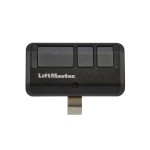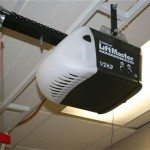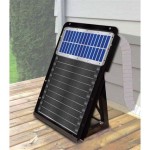Garage Door Opener Compatible With Alexa: A Comprehensive Guide
The integration of smart home technology continues to revolutionize everyday living, offering increased convenience, security, and automation. One area where this technology shines is in the realm of garage door openers. A garage door opener compatible with Alexa provides users with the ability to control their garage door using voice commands, enhancing accessibility and streamlining their routines.
Choosing the right garage door opener that integrates seamlessly with Alexa requires careful consideration of various factors, including compatibility, security features, installation requirements, and overall ease of use. This article delves into the specifics of Alexa-compatible garage door openers, exploring their benefits, key considerations, and available options.
Understanding the Benefits of Alexa Integration
The primary advantage of a garage door opener compatible with Alexa is the hands-free control it offers. Users can simply speak commands to open or close their garage door, eliminating the need to fumble for a remote or use a wall-mounted button. This is particularly useful when arriving home with groceries or other heavy items, allowing for a seamless transition into the house.
Furthermore, Alexa integration enhances home security. Users can check the status of their garage door remotely, ensuring it is closed and secure even when they are away from home. If the door is left open accidentally, they can close it using a voice command or through the Alexa app, preventing potential security breaches. This feature is especially valuable for those who travel frequently or have concerns about home security.
Alexa integration also enables the creation of automated routines. For instance, users can set up a routine that automatically closes the garage door at a specific time each night or when a sensor detects they have left the house. This level of automation contributes to a more efficient and secure home environment, freeing up time and mental energy for other tasks.
Key Considerations When Choosing an Alexa-Compatible Garage Door Opener
Selecting the appropriate garage door opener requires a thorough assessment of individual needs and preferences. Several factors must be considered to ensure the chosen opener provides the desired functionality and integrates seamlessly with the existing home automation ecosystem.
Compatibility: The most crucial aspect is ensuring compatibility not only with Alexa but also with the existing garage door system. Some openers may only be compatible with specific brands or models. Carefully review the compatibility specifications of each opener to avoid purchasing a device that does not work with the current setup. It is also important to consider the type of Wi-Fi network required for connectivity, as some openers may only support 2.4 GHz networks.
Security Features: As garage doors are potential entry points for intruders, security is paramount. Look for openers with advanced security features, such as rolling codes, which change the access code each time the door is opened or closed, preventing unauthorized access. Two-factor authentication is another valuable security measure that adds an extra layer of protection. Some openers also offer real-time monitoring and alerts, notifying users of any unusual activity or unauthorized access attempts.
Installation and Setup: The ease of installation and setup is another vital consideration. Some openers are designed for DIY installation, while others require professional installation. Evaluate the complexity of the installation process and determine whether professional assistance is necessary. Also, consider the user-friendliness of the setup process, including the ease of connecting the opener to the Wi-Fi network and integrating it with Alexa. Clear and concise instructions are essential for a smooth and hassle-free setup experience.
Features and Functionality: Beyond basic opening and closing functionality, consider the additional features offered by different openers. Some openers include built-in battery backups, ensuring operation even during power outages. Others offer smartphone control through a dedicated app, allowing users to monitor and control the garage door remotely. Integration with other smart home devices, such as security cameras and lighting systems, can further enhance the overall smart home experience. Consider the features that are most important and choose an opener that meets those specific needs.
Price: The price of Alexa-compatible garage door openers can vary significantly depending on the brand, features, and functionality. Set a budget and compare the prices of different models, taking into account the value they offer. While it may be tempting to opt for the cheapest option, it is important to prioritize security and reliability over cost. Investing in a higher-quality opener with robust security features can provide greater peace of mind in the long run.
Exploring Available Options for Alexa-Compatible Garage Door Openers
The market offers a diverse range of garage door openers that are compatible with Alexa, each with its unique features and capabilities. Understanding the different types of openers and their respective strengths and weaknesses is crucial for making an informed decision.
Smart Garage Door Openers: These are complete garage door opener systems designed with smart home integration in mind. They typically include a new garage door motor, sensors, and a Wi-Fi module for connecting to the home network. Popular brands in this category include Chamberlain MyQ and LiftMaster. These openers often offer advanced features, such as smartphone control, activity logs, and integration with other smart home devices.
Smart Garage Door Controllers: These devices are designed to be added to existing garage door opener systems, effectively "smartening" them. They connect to the existing opener's terminals and provide Wi-Fi connectivity, enabling Alexa integration. Meross and Garadget are examples of popular smart garage door controllers. These controllers are a more affordable option than replacing the entire garage door opener system, making them a good choice for those who are satisfied with their current opener but want to add smart home functionality.
DIY Solutions: For tech-savvy users, DIY solutions offer a more customizable approach. This involves using a microcontroller, such as a Raspberry Pi or Arduino, to control the garage door opener and integrate it with Alexa. While this option requires technical expertise and programming skills, it offers the greatest flexibility and control over the system. However, DIY solutions may not offer the same level of security and reliability as commercially available products.
Setting Up and Using an Alexa-Compatible Garage Door Opener
Once the appropriate garage door opener has been selected and installed, the next step is to configure it for use with Alexa. The setup process typically involves connecting the opener to the home Wi-Fi network and linking it to the Alexa account. The specific steps may vary depending on the brand and model of the opener, but the general process is outlined below.
Connecting to Wi-Fi: Most Alexa-compatible garage door openers use a dedicated app to connect to the home Wi-Fi network. The app will typically guide the user through the process, prompting them to enter the Wi-Fi password and select the appropriate network. Ensure the opener is within range of the Wi-Fi router to ensure a stable connection. Follow the instructions provided by the manufacturer for connecting the opener to the Wi-Fi network.
Linking to Alexa: Once the opener is connected to the Wi-Fi network, it can be linked to the Alexa account. This usually involves enabling a specific skill in the Alexa app that corresponds to the garage door opener brand. The Alexa app will guide the user through the process of linking the accounts, which may involve entering login credentials or authorizing access.
Setting Up Voice Commands: After linking the opener to Alexa, users can start using voice commands to control the garage door. Common commands include "Alexa, open the garage door" and "Alexa, close the garage door." Some openers may require a security PIN to be entered before the door can be opened using a voice command. This adds an extra layer of security, preventing unauthorized access. Customize the voice commands to make them easy to remember and use.
Troubleshooting Common Issues: While the setup process is generally straightforward, users may encounter some common issues. One common issue is connectivity problems, which can be caused by a weak Wi-Fi signal or incorrect network settings. Ensure the opener is within range of the Wi-Fi router and that the Wi-Fi password is entered correctly. Another common issue is Alexa not recognizing the garage door opener. This can often be resolved by disabling and re-enabling the Alexa skill or by updating the Alexa app. Refer to the manufacturer's documentation for troubleshooting tips and solutions to common problems.
Maintaining Security and Ensuring Optimal Performance
To maintain the security and ensure optimal performance of an Alexa-compatible garage door opener, it is essential to follow some best practices. These practices include regularly updating the opener's firmware, monitoring activity logs, and ensuring the physical components of the garage door system are in good working order.
Firmware Updates: Manufacturers often release firmware updates to address security vulnerabilities and improve performance. It is important to install these updates promptly to ensure the opener is protected against the latest threats. Most openers will automatically notify users of available updates, and the installation process is typically straightforward.
Monitoring Activity Logs: Regularly review the activity logs to monitor the usage of the garage door. This can help detect any unusual activity or unauthorized access attempts. If any suspicious activity is detected, take appropriate action, such as changing the security PIN or contacting a professional security service.
Physical Maintenance: Ensure the physical components of the garage door system, such as the springs, rollers, and tracks, are in good working order. Regularly lubricate these components to prevent wear and tear. If any problems are detected, such as a squeaky door or difficulty opening or closing, address them promptly to prevent further damage and ensure the safety of the system. Consider hiring a professional garage door technician to perform regular maintenance and inspections.
By following these best practices, users can ensure the security and optimal performance of their Alexa-compatible garage door opener, enjoying the convenience and peace of mind it offers for years to come.

Smart Wifi Garage Door Controller With App Control Compatible Alexa Google Assistant Opener Made In Com

Tuya Wifi Smart Automatic Garage Door Opener Remote Control Controller Compatible With Alexa Google Home Switch Open Close Made In Com

Smart Wifi Garage Door Opener Compatible For Alexa Google Home Walmart Com

Amazon Alexa Garage Door Openers At Lowes Com

Tuya Smart Life New Wireless Garage Door Controller Opener Remote Wifi Switch Voice Control Alexa Echo Google Home No Hub Needed

Smart Wifi Garage Door Opener Compatible For Alexa Google Home Walmart Com

Wi Fi Smart Garage Door Opener Controller Life Tuya App Remote Monitor Your Compatible With Alexa Google Home 1 Pieces Wifi Module Switch Made In Com

Smart Garage Door Opener With Amazon Alexa Ismartgate

Smart Wifi Garage Door Opener Compatible For Alexa Google Home Walmart Com

Remootio 3 Smart Wi Fi Garage Door Opener Alexa Compatible








